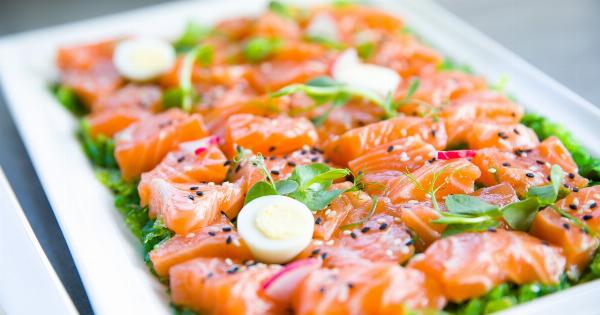Introducing solid foods to your baby is an exciting milestone in their development. It opens up a whole new world of tastes and textures for them to explore. However, starting solids can also be a challenging time for both parents and babies.
If you’re about to embark on this journey, we’ve got you covered. In this article, we will provide you with some essential tips and tricks to help make the transition to solid foods a smooth and enjoyable experience for everyone involved.
1. Consult Your Pediatrician
Before starting solids, it’s crucial to consult your pediatrician. They can guide you on the right time to introduce solids, taking into consideration your baby’s readiness signs and development.
Every baby is different, and your healthcare provider will be able to provide personalized advice based on your baby’s unique needs.
2. Look for Developmental Signs
Ensure that your baby is showing signs of readiness before offering solid foods. These signs include the ability to sit up with minimal support, good head control, and the disappearance of the tongue-thrust reflex.
These developmental signs indicate that your baby is ready to start exploring solid foods.
3. Start with Single-Ingredient Foods
When introducing solids, it’s best to start with single-ingredient foods that are gentle on your baby’s digestive system. Some great options include mashed bananas, sweet potatoes, and avocado.
Offering one new food at a time allows you to monitor your baby’s reaction and identify any potential allergies or intolerances.
4. Begin with Small Portions
Start with small portions of solid foods, as your baby’s primary source of nutrition will still be breast milk or formula. Initially, your baby will have only a few spoonfuls of food once a day.
Gradually increase the portion size and frequency as your baby’s appetite grows.
5. Pay Attention to Textures
As your baby becomes more comfortable with eating solids, gradually introduce different textures. Start with thin purees and progress to thicker textures, such as mashed or minced foods.
Offering a variety of textures helps your baby develop their chewing skills and prepares them for transitioning to family meals in the future.
6. Offer a Variety of Foods
Introduce a wide range of foods to your baby to expose them to different flavors and nutrients. Include fruits, vegetables, grains, and proteins in their diet.
Offering a diverse selection of foods also helps prevent them from becoming too reliant on specific food items and encourages them to become adventurous eaters later in life.
7. Be Patient with Picky Eating
It’s common for babies to be fussy or refuse certain foods during their introduction to solids. This is a normal part of the learning process, and it’s essential to be patient. Offer foods multiple times, even if they were initially rejected.
It can take several attempts before a baby becomes familiar with and accepts a new food.
8. Gradually Introduce Allergenic Foods
Recent research suggests that introducing allergenic foods, such as nuts, eggs, and shellfish, early and regularly can help reduce the risk of allergies. However, it’s important to do this under the guidance of your pediatrician.
Start by offering a small amount of the allergenic food and monitor your baby for any adverse reactions.
9. Avoid Added Sugar and Salt
Avoid adding sugar or salt to your baby’s foods. Their taste buds are sensitive, and they don’t need the extra flavorings. Opt for natural sweetness from fruits or vegetables and use herbs and spices to enhance the taste of their meals.
This helps develop their palate and encourages them to enjoy a wide variety of flavors.
10. Enjoy Mealtimes Together
Dining together as a family is an excellent way to create a positive eating environment for your baby. Sit together, turn off distractions, and enjoy meals together.
Your baby will pick up on your eating habits and behaviors, and this shared experience will help them develop healthy eating habits as they grow.


























